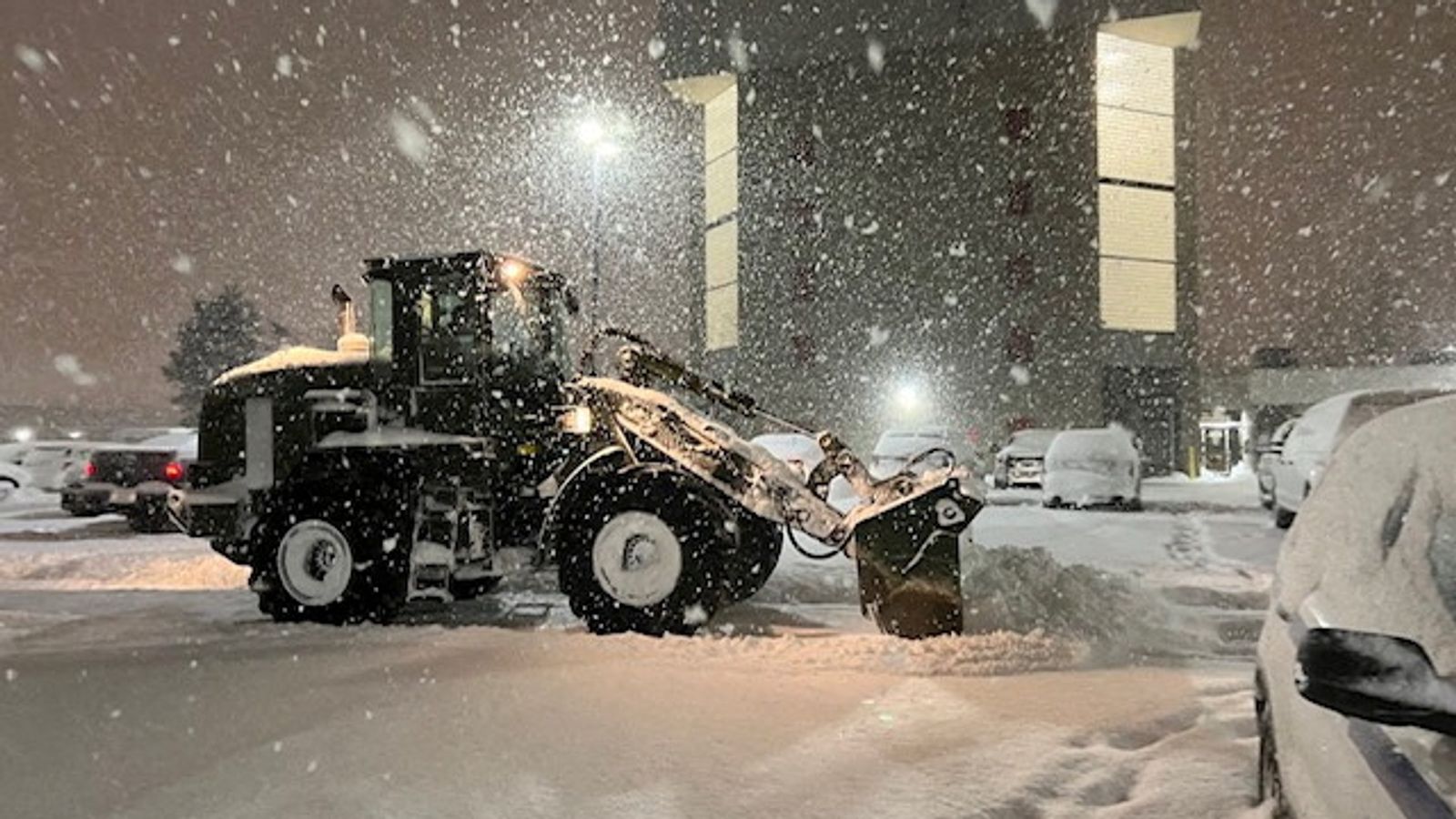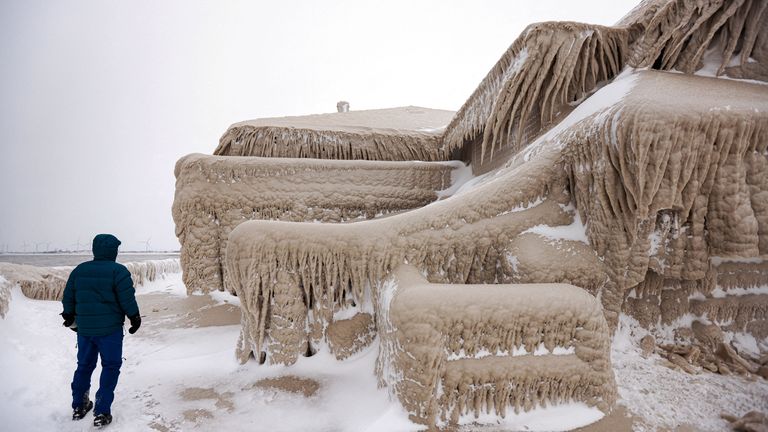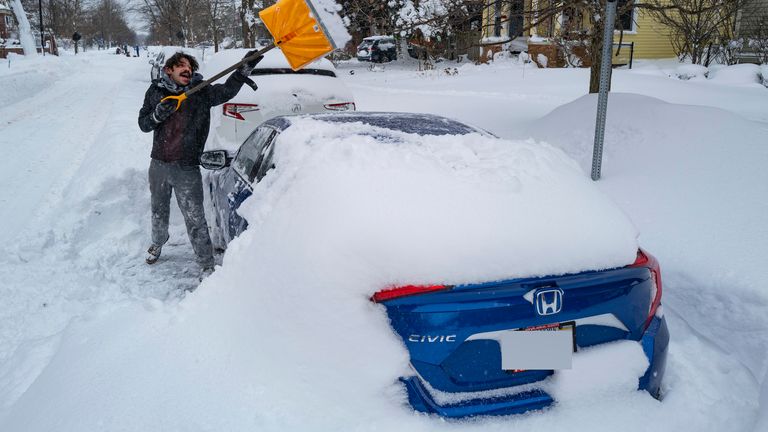Parts of the US could see another 12 inches of snow after days of devastating blizzards that have caused chaos across North America – as New York’s governor warned: “We know that the storm is coming back.”
The storm has caused at least 57 deaths in the US, with a further four people killed in Canada after a bus rolled over on icy roads in British Columbia.
In the US, 28 of the deaths were in the state of New York, most of them in Erie County, where the main city Buffalo has been hit hard.
President Joe Biden has authorised federal support for New York state, where tens of thousands of people have been left without power in the storm.
But temperatures have plummeted below normal from east of the Rocky Mountains to the Appalachians, with those in places like Jackson, Mississippi, being left with no water due to burst frozen pipes.
NBC News reported that in Buffalo desperate residents flooded Facebook groups seeking help.
One person asked for spare disposable nappies for twin infants, and another for medicine for a sick toddler. Several people made urgent requests for formula milk for babies.
One Buffalo resident with four small children wrote: “Running really low on food, been stuck in our house… Slightly starting to panic when I looked outside and seen it snowing more.”
Police in the city said on Sunday evening there were “isolated” instances of looting.
Erie County executive Mark Poloncarz described the blizzard as “the worst storm probably in our lifetime”, warning: “This is not the end yet.”
He said some people had been stranded in their cars for more than two days, with emergency services struggling against the terrible weather to reach those in need of help.
New York Governor Kathy Hochul said during the weekend that many of the state’s ambulances and fire trucks were themselves stuck in the snow, and police in Buffalo appealed online for snow mobile owners to help.
On Monday, she called the storm “one for the ages”, adding that it and another big snowstorm just over a month ago had brought almost as much snow as the area would expect during the whole winter.
People who left their cars in search of warmth and safety were now trying to find them again, many of the vehicles having been buried under snow.
The Buffalo area was seeing between 2 to 3 inches of snow an hour, with it reaching as much as 2ft deep in Jefferson and northern Lewis counties, the National Weather Service (NWS) said. At Buffalo Airport, the snow had reached nearly 50 inches (1.27 metres) deep on Monday morning.
The NWS said the weather was proving particularly deadly because of the low temperatures and even lower wind chills which were proving dangerous for travellers who become stranded or people who work outside.
Read more:
What is a bomb cyclone?
In pictures: US gripped by deep freeze
Life on the road as deep-freeze conditions hit New York State
And it is expected that more victims will be found as the snow clears – many of the fatalities already confirmed were people who froze while stranded in their vehicles.
Some victims died while shovelling snow and some died because ambulances could not reach them in time to respond to medical emergencies.
Many shops in Buffalo are closed and people have been told not to travel, leaving some resorting to pleas for donations of food and other household essentials.
Upstate New York was not the only area set to be in danger with western parts of the country also bracing for an incoming storm, as forecasters warned of a “potent surge of moisture” into the Pacific Northwest and California on Tuesday, threatening flash floods.
The storm also knocked out power in communities from Maine in the northeast of the country to Seattle in the southwest.
Storm-related deaths have been reported nationwide, including at least eight following crashes in Missouri, Kansas and Kentucky. A woman also died after falling through Wisconsin river ice.
On Monday, almost 4,000 flights were cancelled, according to the tracking site FlightAware, aggravated by cancellations at Southwest Airlines, where 70% of its flights were not running as scheduled.
Meanwhile, almost 70,000 homes and businesses remained without power.









